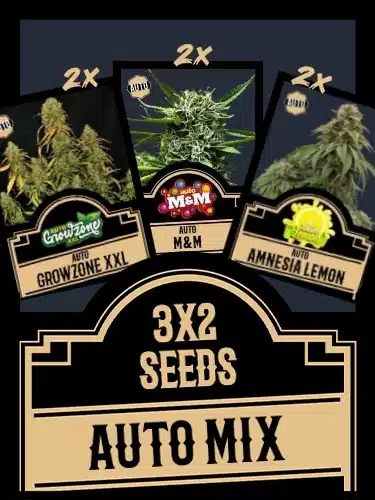Trichomes & Cannabinoids – How to improve your harvest!
Trichomes, indicators when to harvest.

They extend like a crystal landscape over the surface of the hemp plant, and thus bring the eyes of many growers to shine! However, trichomes don’t just look interesting, they are also of fundamental importance to the outcome of your harvest. But before we go into more detail about the function and tasks of trichomes in cannabis plants, let’s first briefly explain what trichomes are all about.
What are trichomes?
The word Trichome is best translated as plant hair. This does not mean that your cannabis plant actually grows hair. Trichomes are microscopic hair-like structures, that form on the plants surface. Although it may be perceived as hairy, these are actually glands, in our case resin-bearing glands. In these glands, the cannabis plant forms, among others, cannabinoids such as THC and CBD.
So they are the biological production sites of those active ingredients that make this plant so interesting to us! That for, trichomes are actually the most important part of the hemp plant for us consumers. That’s why we thought we should dedicate a whole article to this little fellas, so any grower gets to know about the importance of trichomes.
Trichomes – function and task
However, Mother Nature has not conjured these trichomes to the cannabis plant to conjure us a smile every now and then … Rather, they serve as protection against the natural environment of the plant. These include, for example, the natural enemies of the animal kingdom. In addition to the cannabinoids, they also form terpenes, whose bitter taste ensures that many an insect to keep away. The resinous layer protects the plant in addition to fungus and mold. In addition, the resinous trichomes protect the plant against strong temperature fluctuations by absorbing the heat at high heat to return it to the plant when the temperature drops. This self-produced sunscreen also protects against high UV radiation.

Botanists distinguish between three different types of trichomes in cannabis plants:
- Tuber trichomes
- Trichomes with head, without stem
- Trichomes with head and stalk
So important are trichomes for cannabis cultivation!
As we mentioned earlier, trichomes are biological production sites for cannabinoids such as THC or CBD. To be more specific, THC and all other cannabinoids are formed exclusively in the trichomes. More precisely, in the heads of trichomes. Capitate-Stalked (trichomes with head and stem) have by far the most potential to produce many cannabinoids.
They are therefore the most valuable asset of the cannabis plant and the only reason why we make so much effort with the cultivation. Proper and careful treatment is so important to avoid any damages to the fine trichomes. Small mistakes can already worsen the harvest result significantly! It is important, for example, not to damage individual trichomes by touching. It is therefore advisable to admire its magnificent, resinous plant only visually, and to renounce wild touching on the plant. Other enemies of our fragile little friends are strong light and too high temperatures.
By the way, it is not that a plant is generally more potent the more trichomes it has. Rather, it’s about the quality of the resin.
Trichomes as an indicator of the right harvest time:
Being able to determine the optimal harvest time is enormously important for the final result! If you have just overslept the right time, or you were just a little too impatient and has harvested the flowers too early, this has a direct negative impact on the quality of the weed. But how exactly do you recognize the perfect maturity of the flowers?
At this point, the trichomes come into play again. Because of their color, the degree of ripeness of the plant can be precisely determined. The trichomes are subject to the same ripening process as the rest of the plant.

In the initial stage, the trichomes under the microscope still look like icicles with a ball at the end. They are almost transparent. Later, when the flower is already fully ripe, the trichomes, especially their heads, are milky like an old bulb. At this time, the plant can already be harvested. Theoretically, this is also the ideal time, as the THC is fully mature. The terpenes have reached their zenith at this time. They are responsible for the good aroma of the flower.
If one refrains from harvesting at this point in time, it can be observed later that the trichomes begin to turn amber. This indicates that the plant is converting THC to CBN. CBN (cannabinol) is another cannabinoid. It does not have any psychoactive effect but has other positive qualities instead. For example, it has a very soothing and sleep-inducing effect.
Through the additional ripening process, the grower can influence the effect of the weed. If he already harvests when the trichomes are all milky-cloudy, the weeds effect will later be more psychedelic … The larger the ratio of the amber trichomes to the white trichomes is, the more changes the high in the direction to a narcotic effect. Even if a narcotic flattening effect is desired, the ratio of 50/50 should not be exceeded at harvest time.
One last good tip: When harvesting, it is again extremely important not to damage the trichomes. When harvesting even until hanging, the resinous flowers should be touched as little as possible. It would be very annoying to ruin a part of the week’s work.















